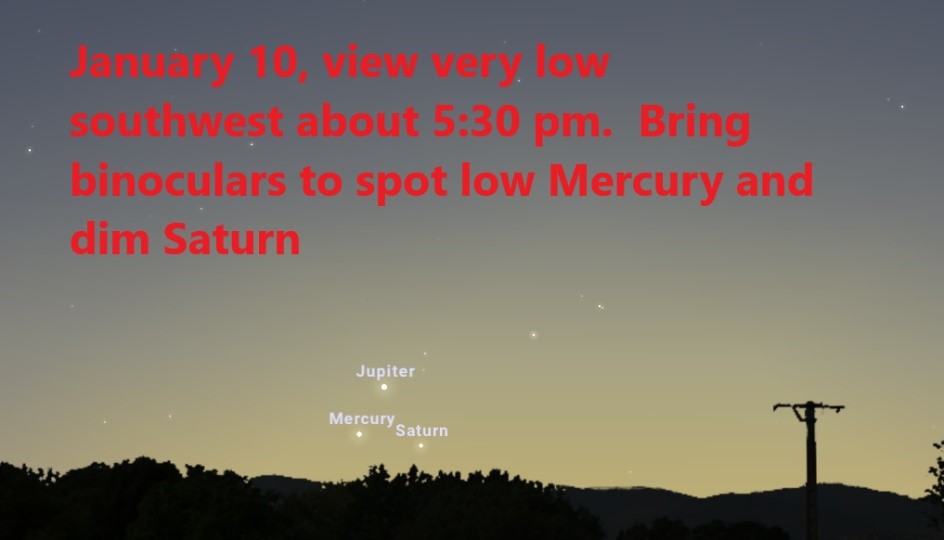OUT WITH THE OLD
The dawn of the new year 2021 features the winding up of some unfinished business in the sky. On the evening of January 5th, Jupiter and Saturn will still be just a degree and a half apart, almost as close as they will appear at their next Great Conjunction in November 2040. How old will you be then? Can you still spot them with your unaided eye, very low in the southwest in the twilight about 5:30 pm St. Louis time? Jupiter will be the much brighter object, with Saturn now to the lower right. Bring binoculars just in case. Each night, Jupiter and Saturn appear lower in the sky and set below the horizon earlier as they appear more and more on the far side of the Sun. They also will be gradually separating from each other. If you have a very good horizon to the southwest, try for Mercury below Jupiter starting around the 7th or 8th, close to the horizon. On the night of January 10, the trio of planets form their tightest triangle, as can be seen in these Stellarium images. Binoculars will almost certainly be needed to have a chance to glimpse Saturn. On the night of the 14th, as shown in the third image, the thin crescent Moon will form a ragged line with Mercury and very low Jupiter. Saturn will almost certainly be invisible by then, with Jupiter just about to follow, lost to view in the twilight. Mercury will then occupy the stage as a solo act where Jupiter and Saturn had been until late January, when it too fades into the twilight.



A somewhat similar situation is happening in the dawn sky as well. Venus has reigned as the “morning star” since May, but it also is gradually disappearing from view on the far side of the sun. Early in January, it is still easy to see as the brilliant star glimmering in the dawn, around a half hour before sunrise, low in the southeast, but it will be hard to find by the end of the month. Two good mornings to say goodbye to it would be January 10 & 11, when the thin waning crescent moon shines nearby as shown in the Stellarium image.

With all of these developments, it could be said that the harvest of planets I referred to in my November blog entry has indeed been brought in. Only reddish orange Mars, easy to spot high in the south in the early evening but much diminished from its October peak, will remain in view by the end of January. Next month, I will switch over from the planet emphasis of the last few months and discuss some of the great winter constellations.
